





Jamón
Jamón represents pork gammon which is a national delicacy in Spain. Traditional 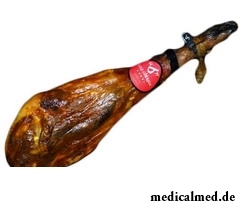 jamón is cooked from hind legs of a pig. There are two main types of this gammon – Serrano and иберико.
jamón is cooked from hind legs of a pig. There are two main types of this gammon – Serrano and иберико.
Serrano is trained from simple grades of mountain pork with light meat, and иберико is an elite type of jamón from pigs who were fattened only by acorns both their meat more tasty and juicy. Both look differ on a way of preparation. Also in Serrano's gammon a hoof white, and in gammon иберико it black color.
History of creation of a delicacy
Jamón is an embodiment of gastronomic history of Spain. For the first time this delicacy was prepared in the period of deficit of salt in Spain when jerking was the only way of preparation of meat. Inhabitants of the Iberian Peninsula salted and smoked meat of pigs. At the same time jamón began to enter basic diet of the Spanish soldiers and conquerors.
The first references of this gammon are dated blossoming of the Roman Empire, and also the delicacy is mentioned in Diokletian's manuscripts. After fall of the Roman Empire jamón stopped being a dish for rich segments of the population and appeared on tables of simple residents of Spain. In the 18th century in Spain this gammon was the main food of seafarers.
Now the best grades of jamón give in Spain, and they are decoration of a holiday table.
Jamón caloric content
Jamón is a product of average caloric content which can be a part of the dietary menu. Caloric content of jamón makes 160 kcal, and also it contains 16 g of fats, 34 g of proteins and 1 g of carbohydrates.
Useful properties of jamón
Jamón contains a large amount of vitamin A and E, fatty acids which contribute to normalization of level of cholesterol in blood and possess preventive action against atherosclerosis.
This gammon contains antioxidants and tyrosine which promote cell regeneration, tighten skin and interfere with aging. The regular use of this dry-cured meat is good prevention of cardiovascular diseases, and also promotes youth of face skin and good shape of vessels. Minerals, sulfur, zinc, iron, potassium and magnesium are a part of traditionally made jamón.
Preparation of jamón
Taste and storage period of jamón depends on process of preparation and respect for correctness of all stages. At the beginning of barkings fill up with salt in a large number, and then dry within several months. Usually drying of jamón in Spain begins in the early spring with gradual increase in temperature.
After drying 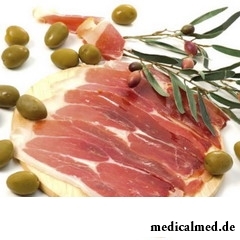 there takes place process of jerking as a result of which meat develops pleasant aroma, a rich juicy taste and dried structure. In cellars there takes place the last process of ripening of gammon where he develops the unique taste.
there takes place process of jerking as a result of which meat develops pleasant aroma, a rich juicy taste and dried structure. In cellars there takes place the last process of ripening of gammon where he develops the unique taste.
To check readiness of a delicacy Spaniards take sample. They puncture jamón in several places with a fine needle to feel aroma and to taste a small slice of meat.
Ready jamón is cut on thin slices the special tool, and for the correct laying of gammon special devices – хамонеро are used. Giving of a delicacy to a holiday table is followed by a special Spanish ritual.
Contraindications
Jamón is contraindicated to the use at individual intolerance of pork, and also it should be limited in a diet at observance of the tough dietary menu.
Do not recommend to eat jamón in a large number to people with a hypertension, atherosclerosis and a serious illness of the alimentary system.
The stomach of the person not bad copes with foreign objects and without medical intervention. It is known that the gastric juice is capable to dissolve even coins.

Cellulitis - very widespread cosmetic shortcoming which arises approximately at 80% of women sooner or later. Emergence ег...
Section: Articles about health
Contrary to popular belief, the multiple sclerosis (MS) is not connected neither with sclerous changes of walls of vessels, nor with age forgetfulness and problems with concentration of attention. This disease has the autoimmune nature. Pathological process of a vyrazh...
Section: Articles about health
The way of life of people promptly changes from year to year: if about ten years ago the personal computer was not in each family, then today already very few people do without this device. Certainly, and children master the computer at full speed: they not only play on it games, but also study, and write school works, and search for necessary information....
Section: Articles about health
The thought that the mass of their body is too big at least once in life visits from 80 to 95% of women. Many...
Section: Articles about health
The phenomenon of improvement of a condition of the patients at administration of drugs who are not containing active agents, so-called effect of placebo is known long ago. At the end of the 18th century the American doctor Perkins began to treat people the "miracle" sticks made of a spl...
Section: Articles about health
Work of a brain is extremely complex and in many respects is not studied yet. It is confirmed also by the features of thought processes which are shown when the person sleeps. Let's tell about some of them....
Section: Articles about health
At this plant there are a lot of names: tuberiferous sunflower, Jerusalem artichoke, solar root, earth pear. Contrary to spread...
Section: Articles about health
People know that thermal sources have salutary force long ago. Treatment by natural waters is one of the most ancient methods of disposal of the most different diseases. Bathtubs, souls, wrappings and inhalations, in combination with reception of water vnut...
Section: Articles about health
Many of us, probably, noticed more than once that from intellectual loadings at some point the brain as though "overheats" and "assimilation" of information is strongly slowed down. Especially this problem urgent for persons of age becomes more senior than fifty years. "Already badly I think", "the head will burst now", "memory as if is disconnected" - here that wants to be told at the time of information overload....
Section: Articles about health
The naturopathy sometimes moves as the new direction of medicine, something like fashionable hobby, and there is nothing farther from the truth....
Section: Articles about health
There is a lot of fans of beer in our country. Statistically, on each average Russian (including women and children) in a year about 60 liters of this drink are consumed. It is not a lot of, as in the Czech Republic or Germany, but figure all the same impressive. Radova...
Section: Articles about health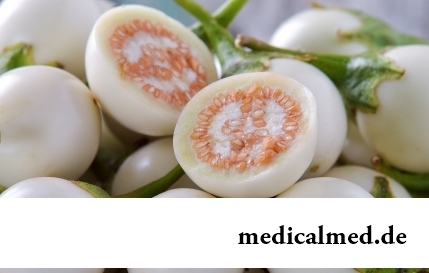
It is possible to find the extensive range of fruit and vegetables in modern shops. Russians already got used that on counters there is not only a seasonal domestic production, but the vegetables and fruit which are grown up in the countries with more comfortable conditions of cultivation at all seasons of the year. However what we see in shops and in the vegetable markets, is only a small part of those edible plants with which the nature is so rich. Today we want to acquaint the reader with rare and very useful vegetables which on...
Section: Articles about health
The next flu epidemic leads to the next panic, from year to year we give in on these manipulations: professionally alarming goal...
Section: Articles about health
Today about 30 diseases, sexually transmitted are known. Wide circulation of these illnesses is extremely promoted by the dual attitude towards them: on the one hand, most of people know about "shameful" diseases and not a stirrup very little...
Section: Articles about health
The Genetically Modified Organisms (GMO) are plants or animals (as a rule, agricultural) to whose genotype purposeful changes were made. Opposition of supporters and opponents of inclusion of such organisms in foodstuff always was very acute. Not only scientists and dietitians, but also a large number of the people who are not specialists in this question are involved in active disputes today....
Section: Articles about health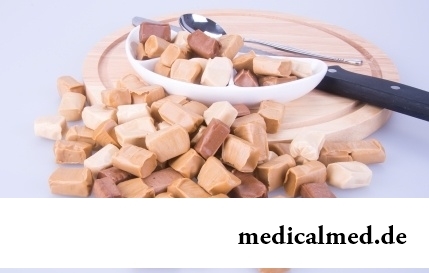
Food with the increased content of sugar is attractive to most of people - it is scientifically confirmed fact. Business here not in a nevozder...
Section: Articles about health
Subfebrile temperature call fervescence to 38 degrees, and subfebrile condition - existence of such temperature over 3 days, and quite often it happens without the visible reasons. Existence of subfebrile condition - a strong indication of disturbances in an organism which can...
Section: Articles about health
Cold, puffiness of a nose, itch, the watering eyes - characteristic symptoms of the allergic rhinitis resulting from hit of allergens (pollen, house dust, hair of animals, etc.) on a mucous membrane of a nose. Unpleasant feelings often give trouble, serving as the reason of a headache, an acrimony, sleep disorders, and in certain cases and the states close to a depression. How to get rid of undesirable satellites of a disease if near at hand there are no antiallergic...
Section: Articles about health
Zone hypostases under eyes - very widespread problem giving to people is a lot of inconvenience. Hypodermic fabric in these parts having...
Section: Articles about health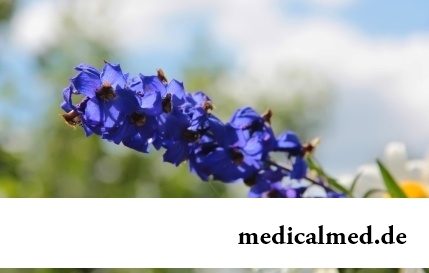
It is impossible to imagine human life in which there would be no plants. Practically in each apartment and any production room there are window plants, millions of people with pleasure are engaged in gardening and truck farming, many citizens пр...
Section: Articles about health
The unpleasant feelings connected with spring breakdown are familiar almost to each of us. Often happens that in March-April on the person weakness leans: he suffers from drowsiness, complains of bad mood, loss of interest in life and failures in affairs....
Section: Articles about health
Life does not indulge the modern woman special emotional comfort and carelessness. Fatigue, troubles at work, misunderstanding...
Section: Articles about health
Dark circles (bruises) under eyes – a shortcoming with most of which often fight against the help of cosmetics (proofreaders, saloon procedures and so forth), eliminating only its visibility. However, according to doctors, skin around eyes – the indicator of many disturbances in an organism...
Section: Articles about health
About 10-15 years ago existence of the computer in the apartment of the Russian was considered as a rarity and office rooms were only at the first stage of equipment by these useful devices. Today practically in each house there is a computer (and often not one), and a regular user is already every our second compatriot. Convenience and efficiency of personal computers are undoubted, but the people working with them daily have to know also about health hazard which they can predstavlit...
Section: Articles about health
History of use of an anesthesia during operations contains more than 160 years. Annually in the world hundreds of thousands surgical вм are carried out...
Section: Articles about health
All the known slogan "Protect Men!" arose not from scratch. In a sense, the nature created men much less adapted for vital disorders, than it seems at first sight. Statistically, men are ill more often...
Section: Articles about health
According to data of World Health Organization, the cataract is diagnosed almost for 7% of the population of Earth. The statistics of incidence is considered not full as at an initial stage the illness, as a rule, does not cause to the person of special inconveniences, and many diseased sees doctors not at once. The cataract is not only one of the most widespread ophthalmologic illnesses, but also the reason of a half of cases of loss of sight....
Section: Articles about health
